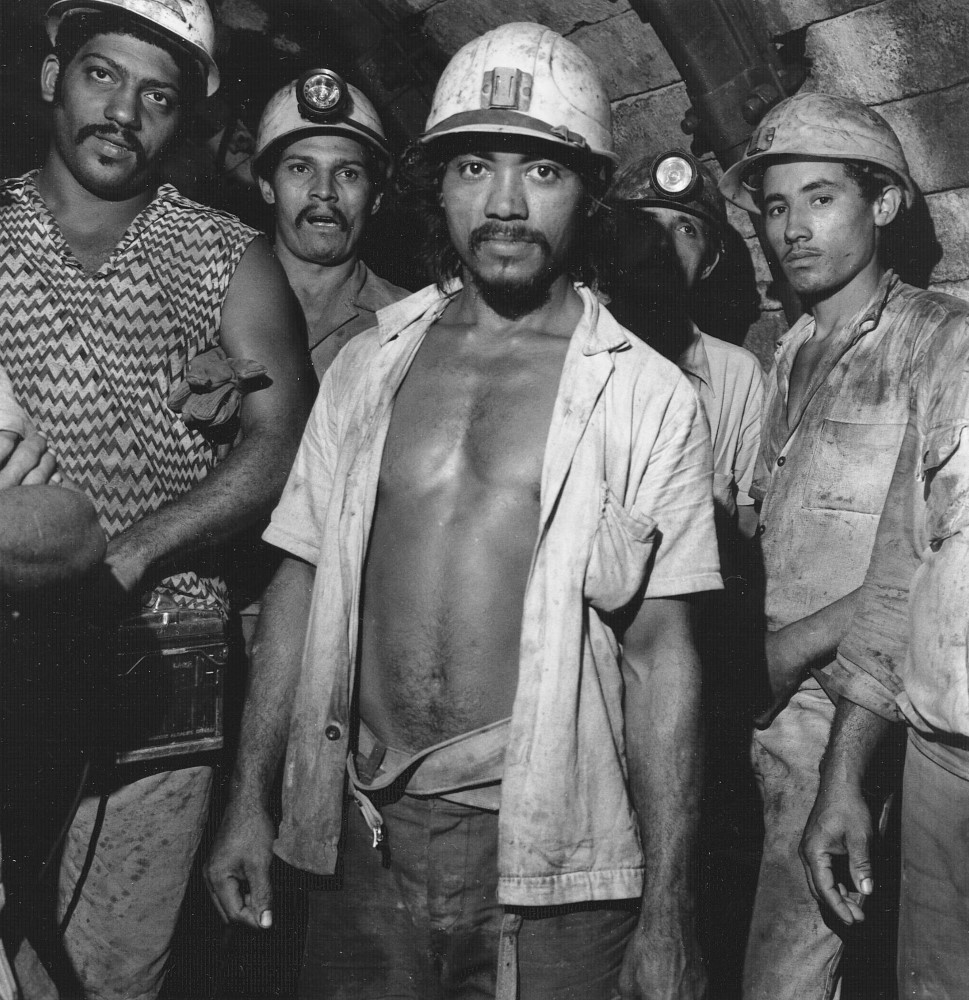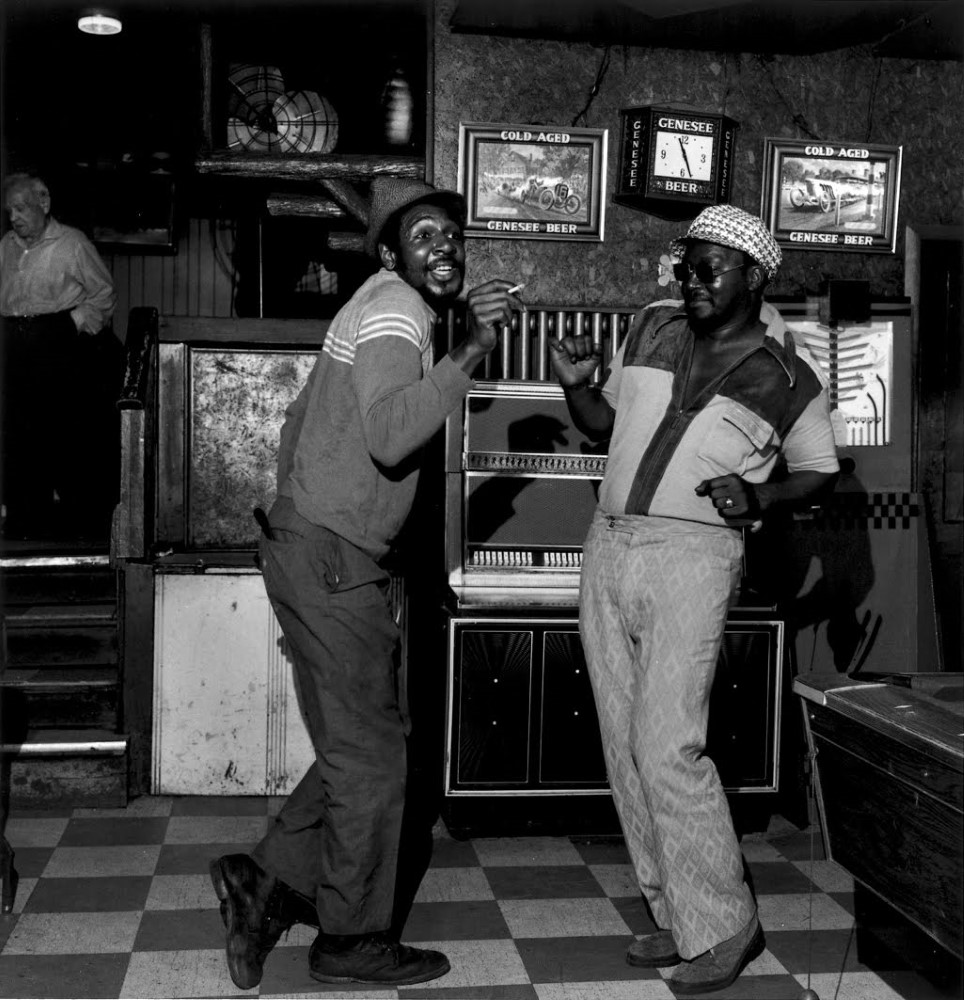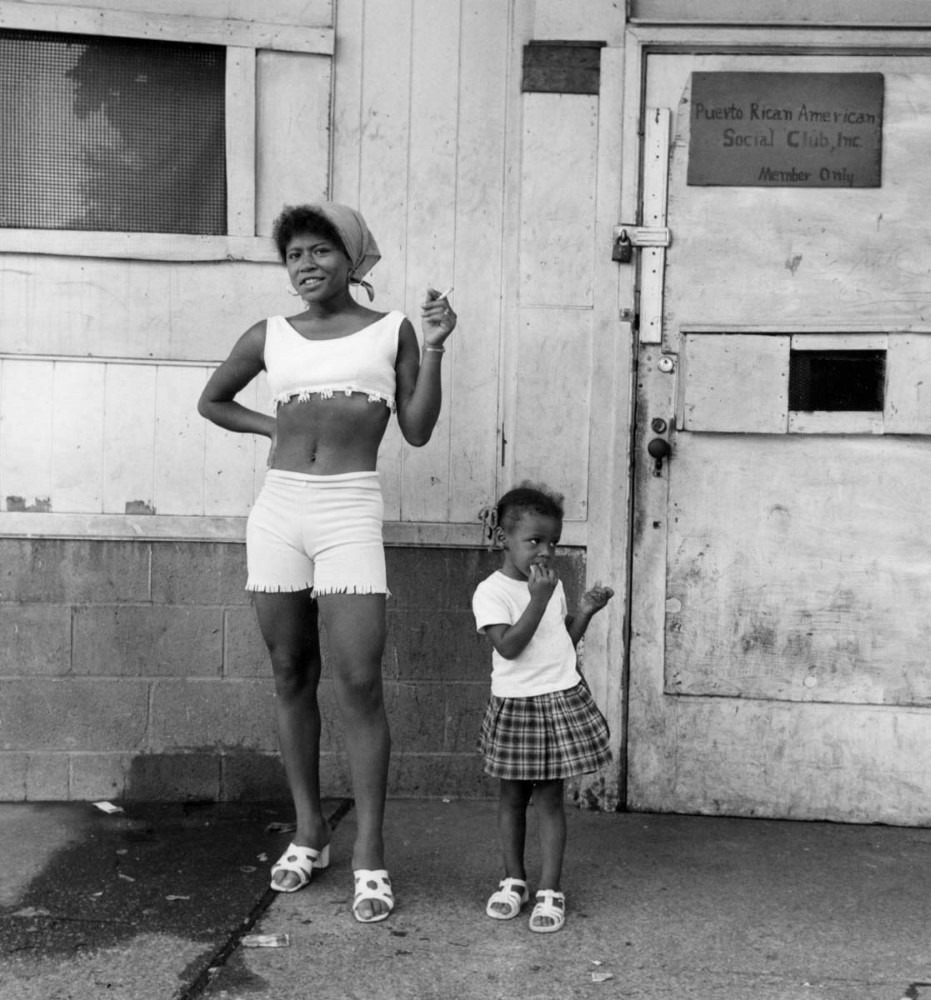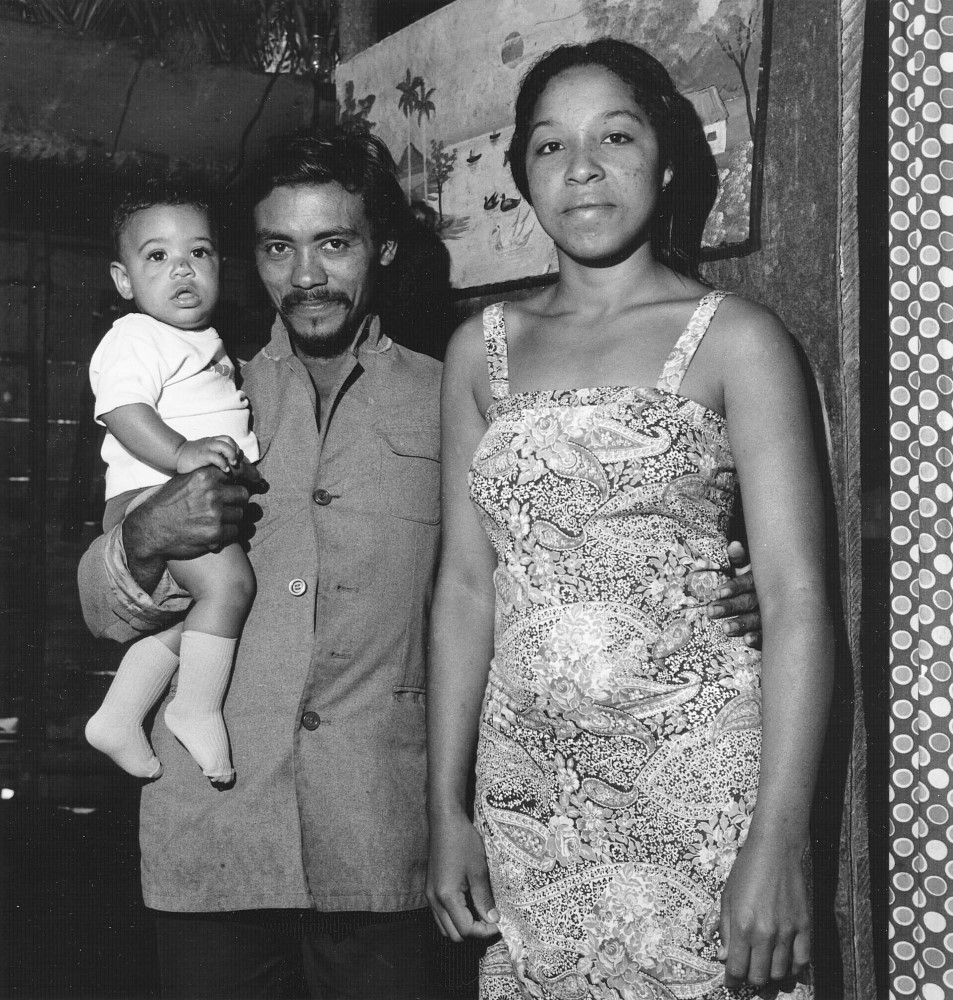The years during which Rogovin completed this series represented a period of great loss and decline for industrial labor in the U.S., especially in traditional manufacturing cities like Detroit, Pittsburgh, and Buffalo…
Milton Rogovin’s “Approach”: Photography, Class, and the Aesthetics of Making Space
By Joseph Entin, Brooklyn College, City University of New York
(Note: this paper was delivered at the American Studies Association Conference, Albuquerque, New Mexico, October 2008)
In 1977, Susan Sontag published her celebrated book, On Photography, which offered a searing critique of the camera’s capacity to objectify and control. “To photograph people is to violate them,” Sontag declared, “by seeing them as they never see themselves, by having knowledge of them they can never have; it turns people into objects that can be symbolically possessed. Just as the camera is a sublimation of the gun, to photograph someone is a sublimated murder” (14-15).
Written with her trademark flair and force, Sontag’s book inaugurated a wave of criticism, much of it influenced by Foucaultian theory, that underscored the instrumentality and implicit violence of photography, its ability to police and regulate it subjects, especially those lacking social and political power: the poor, presumed “deviants” or “criminals,” and workers. As Sontag herself acknowledged, however, photography is not only a predatory means of taking possession, but also a mode of conferring value; it can potentially be put to counter-hegemonic uses, used to see and frame in ways that affirm and legitimate, rather than strictly contain and control, the presence of culturally disenfranchised persons. At the time On Photography1 was released, one such experiment in progressive photography was being undertaken upstate from Sontag, in Buffalo, New York, by a photographer named Milton Rogovin.
Born into a Jewish family in New York City in 1909, Rogovin attended Columbia and trained as an optometrist, graduating in the midst of the Great Depression. Concerned about the plight of the unemployed, he began taking classes at the Communist Party-sponsored Workers School, and became convinced, as he explained later, that “socialism was the path we should take to create a more equitable society” (qtd Herzog, 28). In 1938 he moved to Buffalo and opened an optometric practice; in 1942, he purchased a camera and began experimenting with photography. Rogovin served in the U.S. army in World War II, and then returned to Buffalo, where he continued to be active on the Left. In 1957 he was called before a House Un-American Activities Committee and labeled by the Buffalo Evening News as the city’s “Number One Red.” The same year, he was invited by a friend, William Tallmadge, a professor at Buffalo State College, to take pictures in local African American churches where Tallmadge was making sound recordings for a Folkways album of gospel music. Tallmadge finished his work in a few months, but Rogovin continue to work in the churches for three years, eventually completing a series that was published in Aperture magazine, with an introduction by W.E.B. DuBois. It was this store front church series that convinced Rogovin that social documentary photography was the kind of photography he wanted to pursue, and over the next several years, working closely with his wife Anne, he undertook a range of projects to document people he refers to as “the forgotten ones”: workers, the poor, indigenous peoples, people of color. He has photographed miners in Appalachia, Asia and Europe, the rural poor in Chile, and residents of Buffalo’s Lower West Side. In 1978, he closed2 his optometric office in order to do a photo series in Buffalo area manufacturing plants, entitled “Working People,” which was completed between 1976 and 1987. Many of the portraits in his “Working People” series were diptychs: pairings of one photograph taken of an individual on the job, and one at home, and it’s these diptychs that I’m going to discuss.
In the cultural sphere, the political and economic assault on unionized labor was accompanied by a negative turn in the public image of working people.
The years during which Rogovin completed this series represented a period of great loss and decline for industrial labor in the U.S., especially in traditional manufacturing cities like Detroit, Pittsburgh, and Buffalo, as the postwar settlement between organized labor and corporate capitalism, which had lifted working-class living standards “to unprecedented heights” (Freeman, JAH 732), was shattered by crucial economic and political transformations, including deindustrialization, the de-regulation of several major industries, and the shift from Fordist modes of production, founded on standardization and labor market stability, to regimes of flexible accumulation (David Harvey), marked by capital mobility, outsourcing, and the movement of manufacturing to the Global South and right-to-work states, which sparked “ruthless downward spirals of wage cutting and deunionization” (Davis, 137). Although, as historian Michael Frisch cautions, the story of Buffalo’s economy in the 1970s is not reducible to a pat narrative of industrial demise, the city’s core manufacturing base did collapse over the course of the decade, as unemployment rose from just 4 percent in 1968 to over 12 percent in 1975, as several of the city’s major steel and automobile plants closed or dramatically reduced their labor forces.1
In the cultural sphere, the political and economic assault on unionized labor was accompanied by a negative turn in the public image of working people. One of the most 3well-circulated pictures of American workers in the 1970s came from the so-called hard-hat riots, when, in 1971, construction laborers violently interrupted an anti-war march in downtown Manhattan, “hitting students with fists, hardhats, and tools and chasing them through the narrow streets of the financial district” (Freeman 237). Over the next two weeks, workers undertook daily lunchtime marches through the canyons of Wall Street, shouting “U.S.A. Alla Way!” “The hardhat demonstrations,” historian Joshua Freeman observes, “seemed to confirm a common, middle-class view of manual laborers that held them to be one-dimensional, inarticulate, and intolerant” (Freeman 241).
The power of his art stems from the particular manner in which Rogovin transforms traditional portrait photography and documentary practice, opening up potentially instrumentalist, one-sided visual forms to dynamics of reciprocity and mutuality…
In the context of the economic and rhetorical attacks on unions and workers that marked the late 1970s and early 1980s, Rogovin’s “Working People” series constitutes what Shawn Michelle Smith terms a counter-archive, an alternative array of images that challenges the anti-worker ideology of the emerging neo-liberal regime. If this regime aimed to demean and degrade the public perception of workers—portraying them as resentful, unintelligent, and irrational figures who stood in the way of economic growth and flexibility—Rogovin’s images depict them, by contrast, as a diverse group of competent, thoughtful, complex persons. Rather than a monolithic mass of brawny, white proletarians, Rogovin’s working people are black and white, men and women, married and single, mothers, fathers, and grandparents. They all work in Buffalo and Lackawanna’s industrial plants, but their home pictures indicate a remarkable variety of interests, living contexts, and relationships. In the most basic sense, then, Rogovin’s portraits explode the reductive images of working people circulating in much of the period’s mass culture.4 But more significant than the image of workers, I think, is what Rogovin’s diptychs have to say about the act of looking and the art of photography. In what follows, I want to propose that Rogovin’s photography of working people exemplifies a form of democratic social relations founded on collaboration and dialogue. The power of his art stems from the particular manner in which Rogovin transforms traditional portrait photography and documentary practice, opening up potentially instrumentalist, one-sided visual forms to dynamics of reciprocity and mutuality, and also to elements of uncertainty that underscore the camera’s limitations, even as we come to see its immense powers. (I should note that, as a result of my focus on Rogovin’s method, I’m going to say less about the actual content of his photographs—especially the material objects within the frame—than I otherwise might.)
As commentators have noted, one of the most notable features of Rogovin’s photographs are the “confident poses and direct gazes” his subjects display (Herzog 110). These people are cognizant of Rogovin’s presence; they have paused their labors and turned to the camera to address him. They typically look straight into the lens, exuding an air of relaxed self-assurance. It is this aspect of his method that perhaps most readily reflects Rogovin’s debts to Lewis Hine, to whose work Rogovin’s is often compared.5
Rogovin’s photography thus balances the documentary desire to grasp and present, to “capture” an image of the “Other,” with a commitment to holding back in order to allow his subjects space to shape the photographic process.
In this work portrait, for instance, the man’s face glistens with sweat and his shirt is smeared with grease—he’s clearly been working hard. The walls behind him are soot-covered and grungy. The picture does not indicate what kind of work he performs, because the focus is on the man himself and his presence, which is anchored by the intensity of his gaze. He looks sharply, resolutely, into the lens, yet his body is posed easily, almost languidly, as he leans softly on his right arm. In the accompanying home portrait, his face betrays a hint of a smile, but his eyes are, as before, locked on the camera, looking directly at us. His casual, yet snappy attire and his relaxed, even effeminate, pose, left hand poised delicately on the sideboard, convey a feeling of calm confidence.
As these pictures indicate, Rogovin’s photographs are the product of patient, self-conscious exchanges between photographer and subject. As such, they strike a balance between intimacy and distance, revelation and deferral. On one hand, the portraits are6 distinguished by the subjects’ direct engagement with the lens, and by the frontality and eye-level angle of framing, which create a feeling of immediacy and honesty.
Yet the portraits also maintain an air of formality, a byproduct of conventional framing and posing—especially in the domestic pictures—that generates a certain measure of distance. The subjects look directly at us, yet we are aware that their self-presentation is in some degree theater, governed by conventions and pre-pared for our consumption. These photographs do not try to capture—and do not claim to offer—an unadulterated and transparent “truth,” an unmediated or utterly candid view of working-class life. Rather, these are carefully framed portraits of people who have deliberately, self-consciously posed and composed themselves for the lens.
Such camera work clearly puts Rogovin at odds with Sontag’s image of the photographer as a potentially sadistic agent of control. Rogovin aims, as he explains, to allow his subjects to shape their own images: “I wanted to get close and make the people be the most important thing in the frame. I never directed them or told them where to stand, how to hold their hands or what to wear. The only thing I asked is that they look into the camera. . . . When you look at these pictures, you know there was no monkey business, and that I was not sneaking around trying to steal pictures of people” (92). This fundamentally cooperative aesthetic, Rogovin acknowledges, invites a measure of aesthetic indeterminacy. “As a rule,” he explains, “I have no preconceived ideas as to what kind of a face or pose I’m looking for . . . . In the few times that I tried to ‘make’ a picture by posing the individual . . . the results were so bad that the photograph usually ended up in the waste basket” (qtd. in Herzog 109). Rogovin depends on his subjects to pose and present themselves; without their involvement, his art fails.7
Rogovin’s photography thus balances the documentary desire to grasp and present, to “capture” an image of the “Other,” with a commitment to holding back in order to allow his subjects space to shape the photographic process. His practice is a form of “approach,” to borrow a term from Carol Shloss, that resists even as it engages. We might call this an aesthetic of “making space”: a photographic method that creates room for subjects to actively participate in the production of their own images rather than stand as passive objects before a colonizing gaze. In a society that systematically diminishes the social, economic, and political power and freedom of working people—especially working people of color—Rogovin’s work models an alternative: a collaborative relation that grants working-class subjects an active role in the production of their public image. Rogovin’s commitment to collaboration is also evident in his long-standing practice of giving prints to people he photographs, exhibiting in their neighborhoods, and actively soliciting their feedback (Herzog 51).
The freedom that Rogovin gives to his subjects produces some potentially surprising juxtapositions, such as the elderly foundry worker holding a kitten, an icon of 8 vulnerability, in his right hand, while his wife stretches her arm around him. Several other diptychs offer striking discontinuities between work and homes photographs.
In this diptych, the woman offers up a jaunty pose and sly smile, a huge gear thrown casually over her shoulder, suggesting a confidence, even a playfulness, at work; in her home shot, where she is the only adult, she has placed herself to the side and smiles more neutrally, giving her children center stage, with the image of the lion in the upper right hand corner perhaps to signal her protective stance and prowess.9
In the work photograph in this diptych, the woman is cast as a figure of immense strength. She is shot slightly from below, which elevates her figure, and her power in the image is enhanced by the thick protective clothes she wears and the long, steel-cutting device that she holds so casually. She looks directly at us, but her eyes are obscured behind dark goggles, and she doesn’t smile. She is a commanding presence: a powerful, skilled person who takes her work seriously. Her home photograph, by contrast, is marked by the broad smiles she and her sons display, and the ease and comfort they exude with one another, and, it seems, with the photographer. This (apparently) single black mother—a figure so often vilified in Reagan-era “family values” discourse—here appears as a responsible, loving parent and an accomplished worker.
The space Rogovin creates for his subjects’ self-expression flows in part from his use of a Rolleiflex camera, which has a top-side view finder.
The space Rogovin creates for his subjects’ self-expression flows in part from his use of a Rolleiflex camera, which has a top-side view finder. Rogovin notes: “I liked the twin-lens Rollieflex with its waist-level format because it allowed me to look down into the camera. This was a much better way of making photographs as I was sort of bowing in front of my subjects, and this creates a different kind of interaction than aiming the 10 camera directly at them” (qtd. in Herzog 92). Rogovin’s sense of himself bowing before his subjects signals a humility and modesty that undercuts the aggressive, predatory potential of picture-taking. If for Sontag photography is a “social rite, a defense against anxiety, and a tool of power” (8), for Rogovin, photography is, ideally, a democratic social process, a space of dialogue and reciprocal acknowledgement.
This is not to say that Rogovin has completely rejected documentary photography’s power to record and classify. Although each portrait underscores the unique, distinctive features of an individual’s life and labor, the serial repetition of the diptych format places each individual image in the context of a larger a group, a class. There is something taxonomic about Rogovin’s enterprise: he is, after all, composing an archive. Yet this archive suggests the rich variety, rather than the typological status, of persons who share a social and economic position as industrial workers. These people are members of a class, but Rogovin’s images suggest that their lives, bodies, personalities, and personal relationships cannot be reduced to or contained within class as an abstract category.
The fact that Rogovin’s work at once invokes and questions the camera’s capacity to classify—to embed individuals in a larger archive—echoes his challenge to documentary business as usual. Certainly, Rogovin’s images of working people perform a classic documentary task: to lend public visibility to those who have been overlooked and exploited, to give aggrieved people the social recognition they are otherwise denied in our society. However, his images do not enforce the power and prerogatives of middle-class reformers or governmental institutions, as did so much early twentieth-century documentary photography, which, as Maren Stange has argued, tended to reassure “a 11 liberal middle-class that social oversight was both its duty and its right.” By refusing to provide pity-inducing images of working people that present them as weak and vulnerable, Rogovin’s photographs undercut the sense of privilege viewers often feel when looking at pictures of what Jacob Riis called “the other half.” These people might be poor, they might have dirty and draining jobs, but they are self-composed, in possession of themselves and their lives, and in cooperation with Rogovin, of their own images, even as those lives and those images are enmeshed in a larger history and a larger archive. What’s more, Rogovin’s work reminds us of photography’s limitations even as we grasp its powers. To see one picture of a person at work and one at home is not, these images ultimately imply, to assume we have a “whole,” a synthesis. Rather — and this is especially true of the diptychs that present rather dramatic contrasts in demeanor or posture or expression from one half of the diptych to the other — we are left wondering about what we don’t see. And this wondering, I think, encourages us to consider the complexity, the richness, the inestimable intricacies of the lives depicted, intricacies which the camera can hint at, but cannot finally deliver.2
Works Cited
Davis, Mike. Prisoners of the American Dream. New York: Verso, 1984.
Freeman, Joshua. Hardhats: Construction Workers, Manliness, and the 1970 Pro-War Demonstrations. Journal of Social History (June 1993): 725-739.
Harvey, David. The Condition of Postmodernity. New York: Blackwell, 1989.
Herzog, Melanie. Milton Rogovin: The Making of a Social Documentary Photographer. Seattle: University of Washington Press, 2006.
Rogovin, Milton and Michael Frisch. Portraits in Steel. Ithaca: Cornell University Press, 1993.
Shloss, Carol. In Visible Light: Photography and the American Writer, 1890-1940. New York: Oxford University Press, 1987.
Sontag, Susan. On Photography. New York: Anchor, 1977.
Stange, Maren. Symbols of Ideal Life: Social Documentary Photography in America, 1890-1950. Cambridge: Cambridge University Press.
1 NOTE: In 1968, Bethlehem Steel employed nearly 20,000 people in the city, while 22,000 people worked in the city’s seven GM plants. However, according to Buffalo historian Mark Goldman, “The tide turned quickly . . . and within a year or two, industry in Buffalo, particularly in steel and automobiles, entered a period of deepening crisis from which it never recovered.” In 1971, half of the workforce of Bethlehem was permanently laid off; by December 1982, the company announced it would be phasing out almost of its steel making within six months; that same year, Atlas Steel Casting and Republic Steel had likewise closed their Buffalo plants (Herzog 113).
2 My thoughts on the ultimately unresolved, unfinished quality of Rogovin’s diptychs are indebted to Theodor Adorno’s notion of negative dialectics, which underscores the remainders that invariably elude the motion of dialectical synthesis—that for which dialectics cannot wholly account. More generally, my reading of Rogovin was inspired in part by Adorno’s book Minima Moralia. Adorno argued, in Minima Moralia and elsewhere, that late capitalist society is dominated by instrumental exchange relationships in which every person is perceived as an object to be manipulated. An alternative social order would, Adorno suggested, promote what he calls the “possibility of seeing [other persons] as such and not as functions of one’s own will” (MM 131). It would encourage the idea of “fruitful contrast, the possibility of going beyond oneself by assimilating the contradictory” (MM 131). It would defy the urge to see other persons (and the world more generally) through the logic of rational calculation and absolute alternatives. “Freedom,” Adorno explained, “would not be to choose between black and white but to abjure such prescribed choices” (MM 132); it would involve a situation in which “difference and uniqueness cannot be absorbed into the prevalent exchange relationships,” in which ambiguity would be allowed to persist, even flourish (MM 120); it would oppose a logic in which “those in power perceive as the human only their own reflected image, instead of reflecting back the human as precisely what is different” (MM 105). Only in recognizing the “distance in our neighbor” is his or her individuality truly accepted (MM 182). The “presumption of undiminished nearness present from the first, . . . the flat denial of strangeness, does the other the supreme wrong, virtually negates him as a particular human being” (MM 182). As an ideal form of perception, Adorno posits a model that accepts both the independence and relatedness of one’s neighbor: 13
“Contemplation without violence, the source of all the joy of truth, presupposes that he who contemplates does not absorb the object into himself: a distanced nearness” (MM 90). I think that in their best moments, Rogovin’s portraits encourage us to adopt such a form of contemplation.14
ASX CHANNEL: Milton Rogovin
For more of American Suburb X, become a fan on Facebook and follow us on Twitter.
(© Joseph Entin, 2008. All rights reserved. All images © copyright the photographer and/or publisher)

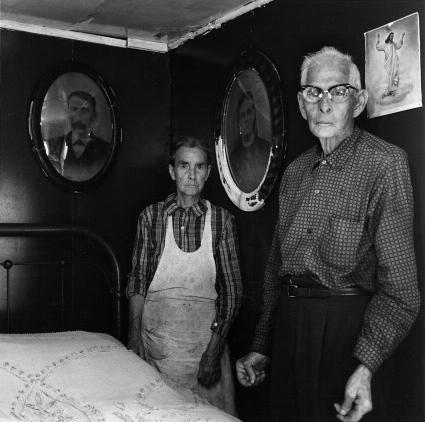

.bmp)
+(2).bmp)
+(4).bmp)
+(3).bmp)
+(5).bmp)
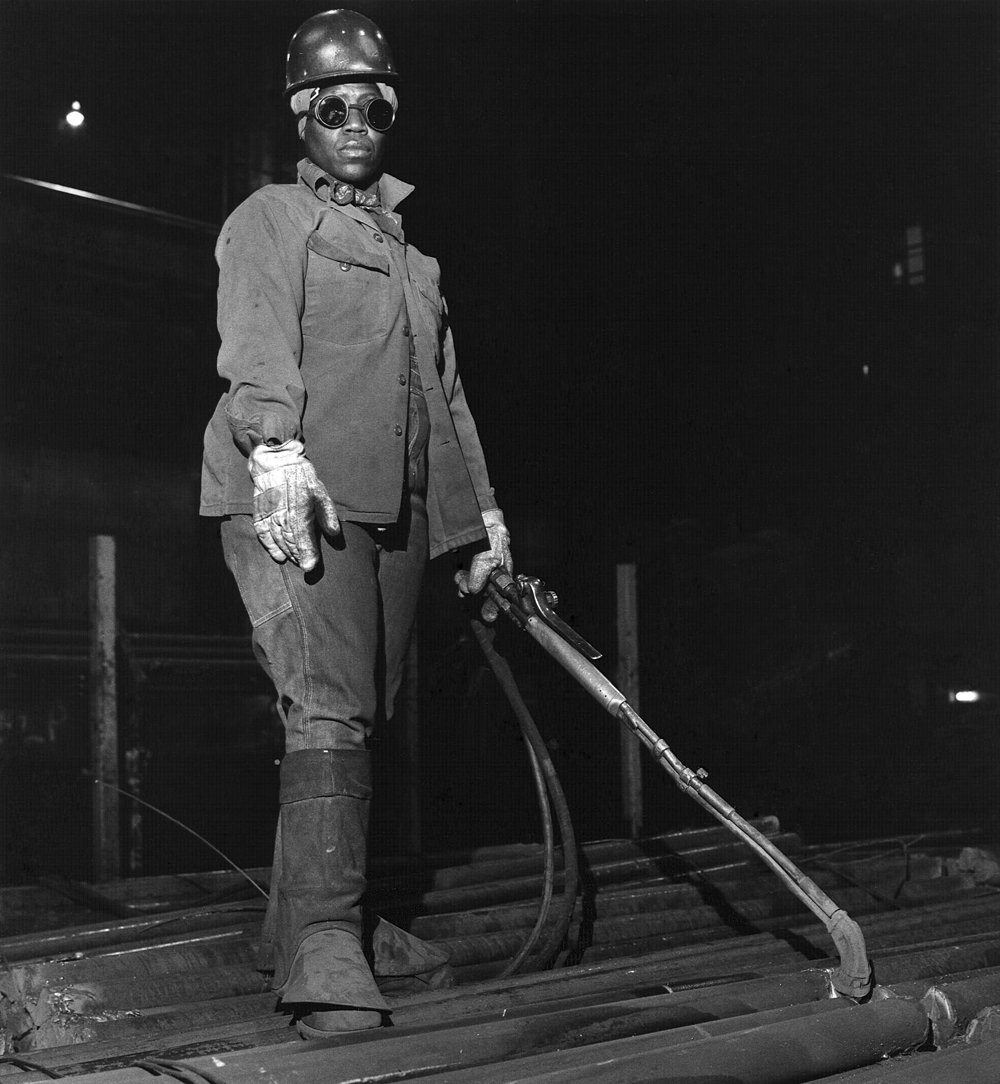
+(7).bmp)
